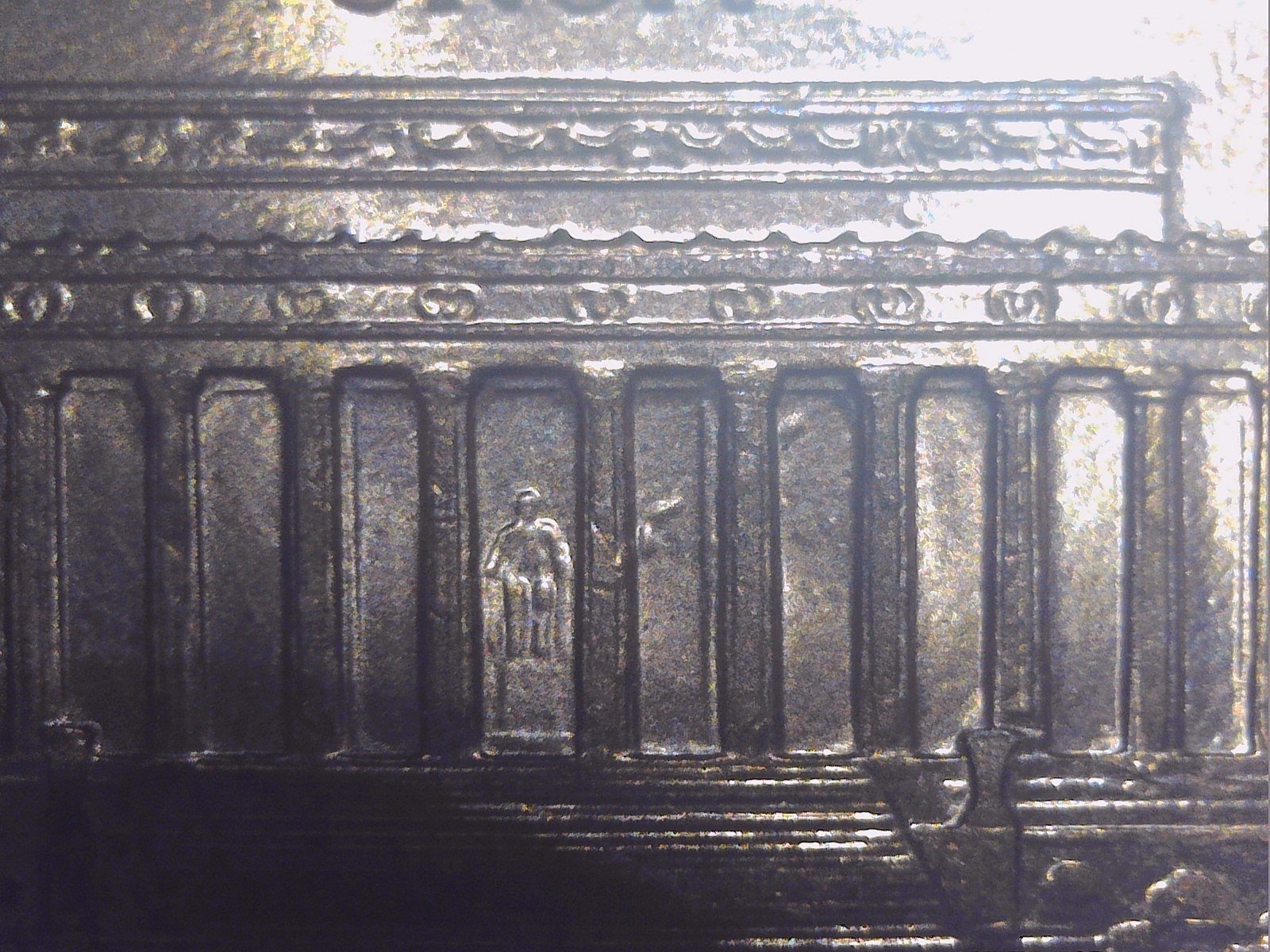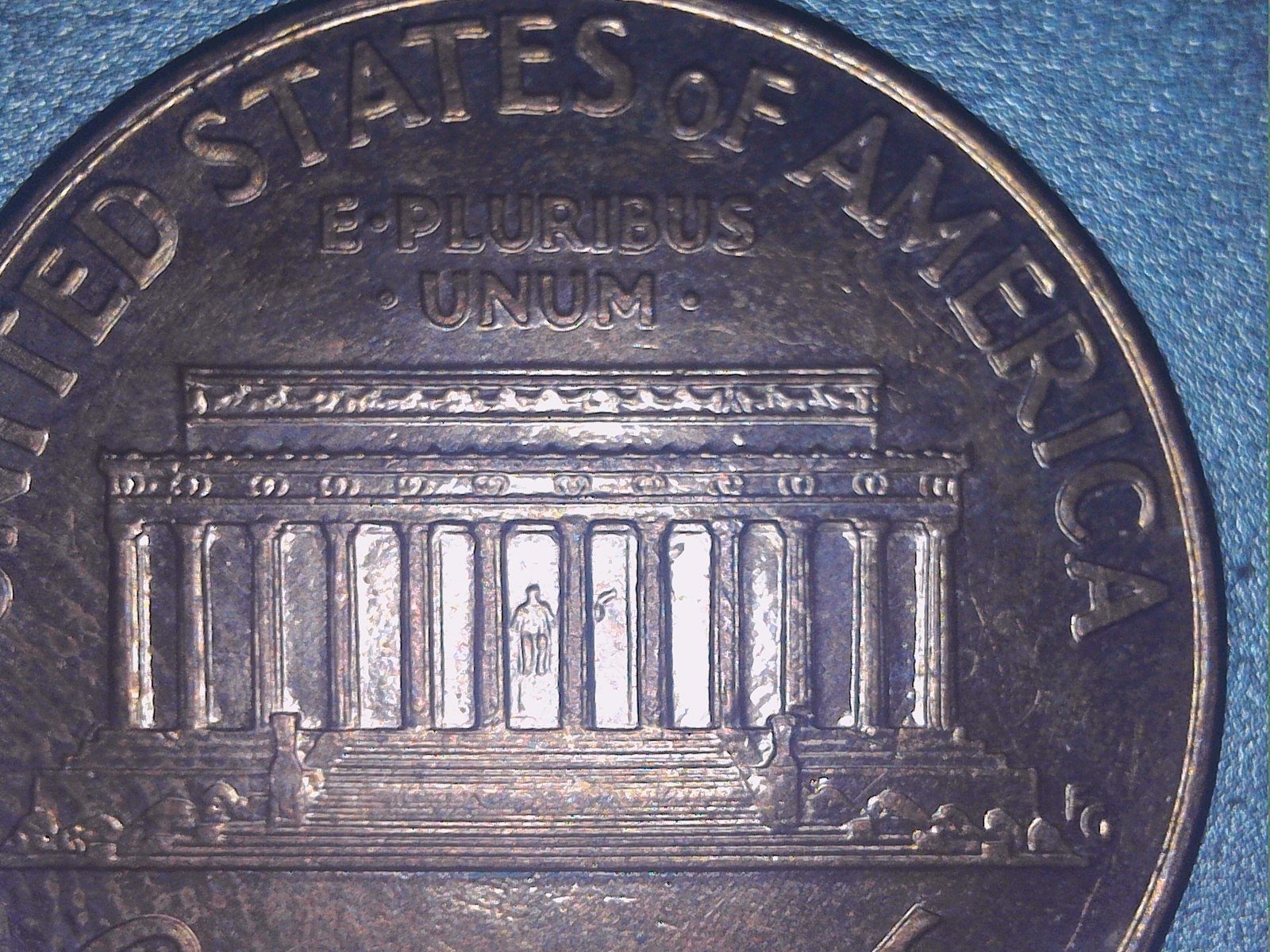Gas bubble or CUD or ???
Hello forum! I have a 2002 D Penny with either gas bubbles or maybe CUD, or maybe something else. Back of coin, inside archway right side of Lincoln. What do you thinK??

0
Hello forum! I have a 2002 D Penny with either gas bubbles or maybe CUD, or maybe something else. Back of coin, inside archway right side of Lincoln. What do you thinK??

Comments
Maybe a small gas bubble but, unfortunately, so insignificant as to not add any value to the coin. Value = 1c.
ANA LM
USAF Retired — 34 years of active military service! 🇺🇸
Also, it could not be a cud in any case. A cud is a die break at the rim.
Great knowledge! thx!
Common, no added value, small bubble.
Bubble in the plating. Poke it with a stick. It'll move.
Keeper of the VAM Catalog • Professional Coin Imaging • Prime Number Set • World Coins in Early America • British Trade Dollars • Variety Attribution
Yep... looks like plating bubble.... No added value... but good eye... you are definitely looking closely at your coins... Cheers, RickO
Not always true. Cuds can occur internally although they are scarcer than the ones commonly seen at the rim.
ANA LM
USAF Retired — 34 years of active military service! 🇺🇸
bubble
Interesting and thanks for sharing the pic here
Successful transactions with : MICHAELDIXON, Manorcourtman, Bochiman, bolivarshagnasty, AUandAG, onlyroosies, chumley, Weiss, jdimmick, BAJJERFAN, gene1978, TJM965, Smittys, GRANDAM, JTHawaii, mainejoe, softparade, derryb, Ricko
Bad transactions with : nobody to date
@JBK Posrted: "Cuds can occur internally although they are scarcer than the ones commonly seen at the rim."
LOL. I'm curious, where you came up with this or who told you this? The reason INTERNAL CUDS are so rare is because no knowledgeable numismatist has ever seen one! Cuds involve the coin's rim. Period.
Just to clarify, it wasn't me who posted that - I was the one who posted that a cud had to be at the rim, and someone was disputing that. I am in agreement with you - a "cud" is at the rim only.
Sorry, I removed my "disagree."
What @EXOJUNKIE referred to above as an "internal cud" is known as a die chip. Only a die break at the rim can be correctly called a CUD.
Just to clarify. Cuds cannot occur internally. From cuds-on-coins.com, "A cud is a die break that involves the rim and at least a little bit of the adjacent field or design." HERE
However, there can be a die break on the interior of the design, but it is not considered a cud. HERE
It could be a die chip, or an internal die break, depending on the size.
And HERE. It seems that in the nearly 40 years that I've collected errors what used to be known as an "interior cud" has evolved to a more scientifically designated "interior die break" -- which BTW is distinct from a die "chip," which is smaller (like a "BIE" penny for example). "Die break" and the slang term "cud" used to be used interchangeably, thus I think "interior cud" and "interior die break (not chip)" are both logically understood to mean the same thing by most error collectors. Just an old guy's opinion.
ANA LM
USAF Retired — 34 years of active military service! 🇺🇸
I don't think there's any question that most collectors would understand what you're referring to; and it honestly doesn't personally bother me to use "interior cud," but you are likely correct that it's most likely the result of an evolution of definitive precision.
That being said, the "1 square millimeter" criteria to distinguish between a Die Chip and Interior Die break is new info to me.
Don't overlook the possibility it could be the result of a rusted die in the central region. I would have to see it much closer to pass judgment. I think it's really cool that your looking over your coins closely.
Always great to see a discussion bloom as did this one....I just like postn' observations...I look close at my coins! Thats how you learn!